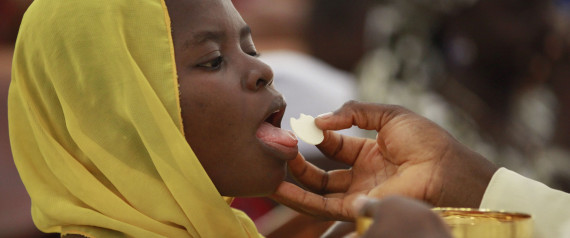"What occurred at the Council of Nicea?"
The Council of Nicea overwhelmingly affirmed the deity and eternality of Jesus Christ and defined the relationship between the Father and the Son as “of one substance.” It also affirmed the Trinity—the Father, Son, and Holy Spirit were listed as three co-equal and co-eternal Persons.
Constantine, who claimed conversion to Christianity, called for a meeting of bishops to be held in Nicea to resolve some escalating controversies among the church leadership. The issues being debated included the nature of Jesus Christ, the proper date to celebrate Easter, and other matters.
The failing Roman Empire, now under Constantine’s rule, could not withstand the division caused by years of hard-fought, “out of hand” arguing over doctrinal differences. The emperor saw the quarrels within the church not only as a threat to Christianity but as a threat to society as well.
Therefore, at the Council of Nicea, Constantine encouraged the church leaders to settle their internal disagreements and become Christlike agents who could bring new life to a troubled empire. Constantine felt “called” to use his authority to help bring about unity, peace, and love within the church.
The main theological issue had always been about Christ. Since the end of the apostolic age, Christians had begun debating these questions: Who is the Christ? Is He more divine than human or more human than divine?
Was Jesus created or begotten? Being the Son of God, is He co-equal and co-eternal with the Father, or is He lower in status than the Father? Is the Father the one true God, or are the Father, Son, and Spirit the one true God?
A priest named Arius presented his argument that Jesus Christ was not an eternal being, that He was created at a certain point in time by the Father. Bishops such as Alexander and the deacon Athanasius argued the opposite position: that Jesus Christ is eternal, just like the Father is. It was an argument pitting trinitarianism against monarchianism.
Constantine prodded the 300 bishops in the council make a decision by majority vote defining who Jesus Christ is. The statement of doctrine they produced was one that all of Christianity would follow and obey, called the “Nicene Creed.” This creed was upheld by the church and enforced by the Emperor.
The bishops at Nicea voted to make the full deity of Christ the accepted position of the church. The Council of Nicea upheld the doctrine of Christ’s true divinity, rejecting Arius’s heresy. The council did not invent this doctrine. Rather, it only recognized what the Bible already taught.
The New Testament teaches that Jesus the Messiah should be worshipped, which is to say He is co-equal with God. The New Testament forbids the worship of angels (Colossians 2:18; Revelation 22:8, 9) but commands worship of Jesus. The apostle Paul tells us that “in Christ all the fullness of the Deity lives in bodily form” (Colossians 2:9; 1:19).
Paul declares Jesus as Lord and the One to whom a person must pray for salvation (Romans 10:9-13; cf. Joel 2:32). “Jesus is God overall” (Romans 9:5) and our God and Savior (Titus 2:13). Faith in Jesus’ deity is basic to Paul’s theology.John’s Gospel declares Jesus to be the divine, eternal Logos, the agent of creation and source of life and light (John 1:1-5,9); "the Way, the Truth, and the Life" (John 14:6); our advocate with the Father (1 John 2:1-2); the Sovereign (Revelation 1:5); and the Son of God from the beginning to the end (Revelation 22:13).
The author of Hebrews reveals the deity of Jesus through His perfection as the most high priest (Hebrews 1; Hebrews 7:1-3). The divine-human Savior is the Christian’s object of faith, hope, and love.
The Council of Nicea did not invent the doctrine of the deity of Christ. Rather, the Council of Nicea affirmed the apostles’ teaching of who Christ is—the one true God and the Second Person of the Trinity, with the Father and the Holy Spirit.
Recommended Resources: Christianity Through the Centuries by Earle Cairns and Logos Bible Software.



No comments:
Post a Comment